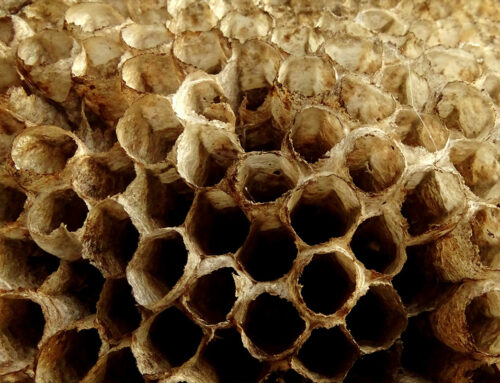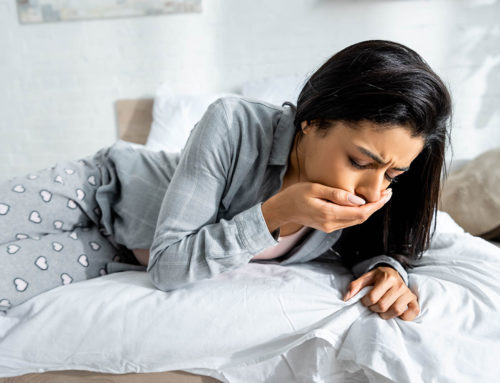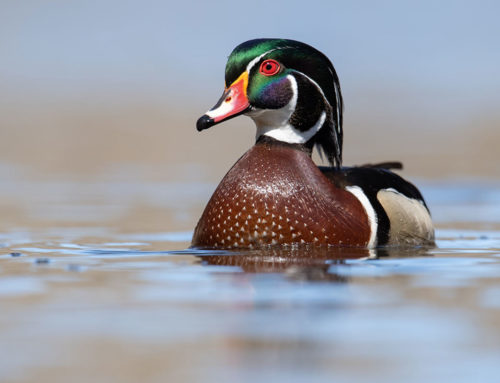Imagine you’re at a serene summer picnic, the sun gently warming your face, the scent of freshly mown grass filling the air. All seems perfect, right? Until… you hear it. A faint buzzing, growing louder and closer, heralding the arrival of the unsung villain of many an outdoor gathering: the wasp!
For some, this buzzing is merely a momentary annoyance, but for those with spheksophobia – an intense fear of wasps – it’s the chilling soundtrack of their worst nightmare! Dive in with us as we explore the buzz-tastic world of wasp phobias and why these little winged wonders send shivers down some spines.
Causes of spheksophobia
Spheksophobia, like other specific phobias, can arise from a combination of genetic tendencies, brain chemistry, and external factors. Here are some potential causes of wasp fear:
Past Traumas
A painful wasp sting or bee sting can leave an indelible mark on one’s memory. In some cases, the pain isn’t just physical but also emotional, especially if the sting leads to an allergic reaction. Seeing dead wasps or a wasp nearby can trigger panic attacks in such individuals. This is even more pronounced if a person accidentally disturbed a wasp’s nest or a hornet’s nest in the past, leading to multiple wasp stings. Watching someone else endure a bee or wasp attack can be just as traumatising, creating a phobia in someone who hasn’t been stung. The excruciating pain associated with some stings can leave one with an intense fear of future encounters.
Learned Behavior
Observing reactions to threats is one way humans have evolved to stay safe. But sometimes, this mechanism works too well. When a child sees their parents display their anxiety about wasps or use wasp spray in panic, they may associate these insects with extreme danger. This learned response can transform into a full-blown phobia, wherein even the sight of traps or a bee hovering around flowers can induce anxiety. If parents or guardians consistently display fear, such as using wasp spray at the slightest hint of a wasp or panicking at the sight of a wasp nest, a child might perceive wasps as deadly threats, embedding this fear deep into their psyche.
Misinformation
Misconceptions about wasps, bees, and their stings can exacerbate fear. The media sometimes exaggerates the threat posed by these insects. While a small percentage of the world’s population suffers from severe allergic reactions to stings, most people do not. However, overblown tales and warnings can lead to an fear of bees or a belief that every wasp sting is deadly.
Innate Tendencies
Evolutionarily speaking, humans may be predisposed to fear creatures that were threats to our ancestors. While it might seem like an outdated response, our monkey brain can still kick in when we feel threatened by wasps, spiders, or other creatures that our ancient selves may have deemed dangerous.
Childhood Misconceptions
The world is a big, confusing place for children, and misunderstandings can arise. A child might regard a bee’s interest in their juice box as a personal affront or believe that a wasp sting they received was a deliberate attack. These misconceptions can lead to a long-lasting fear of wasps.
Symptoms of fear of wasps phobia
The symptoms of spheksophobia, or fear of wasps, can vary from person to person based on the intensity of the phobia. However, common symptoms include:
Physical symptoms:
Panic attacks: For those with an acute fear of wasps, the mere sight or thought of one might trigger panic attacks. Symptoms can include a rapid heartbeat, sweating, trembling, nausea, dizziness, chest pain, and shortness of breath.
Gastrointestinal distress: The anxiety provoked by wasps can manifest as nausea or stomach cramps.
Flight response: Some individuals may feel a sudden urge to flee upon spotting a wasp.
Trembling or shivering: Even the mere thought of a wasp or a wasp sting can elicit this reaction.
Acute reactions: In extreme cases, some may start crying or even faint when confronted by a wasp.
Cognitive symptoms:
Overwhelming fear: An irrational fear can lead to a sense of overwhelming dread at the mere thought of wasps.
Hyper-vigilance: Those suffering might find themselves constantly scanning their environment when outside, hoping to avoid a painful sting.
Anticipatory anxiety: The fear isn’t just limited to real-time encounters. The thought of future interactions with wasps or accidentally disturbed wasps’ nests can cause undue stress.
Negative rumination: Catastrophic thoughts about potential encounters or the effects of wasp stings can dominate the mind.
Behavioural symptoms:
Avoidance behaviours: Many with this phobia go to great lengths to avoid locations or situations teeming with wasps, such as gardens, picnics, or other outdoor events.
Seeking constant assurance: A common symptom involves persistently seeking validation from others regarding the presence of wasps or the safety of an area.
Excessive protective measures: This might include wearing extra clothing layers during warm weather or using large amounts of wasp spray or repellent.
Escape tactics: A mere hint of a wasp near to someone can cause some to immediately evacuate an area.
Emotional symptoms:
Embarrassment: The fear can be so profound that it interrupts social events, leading to feelings of shame or embarrassment.
Persistent dread: Beyond real-time encounters, a lingering dread or fear of future run-ins with wasps remains.
Feelings of powerlessness: Encounters or thoughts of wasps can evoke feelings of being out of control or defenceless.
Is wasp phobia an extreme or irrational fear?
A phobia, by definition, is an extreme or irrational aversion to something. So, if someone has a phobia of wasps, it means they experience an intense, often disproportionate, fear of them. This fear can lead to avoidance behaviours, such as staying indoors during peak wasp seasons, experiencing significant distress when encountering wasps, or even just thinking about them. There are many different types of phobias that have a similar effect on people.
Is the fear justified?
While respect for wasps, especially given their potential to sting, is warranted, spheksophobia is an irrational phobia that magnifies the threat. This fear is further fueled when individuals don’t distinguish between varying flying insects. For example, mud daubers are less aggressive than many wasp species, and bees typically only sting when they feel threatened, as they die post-stinging.
How to overcome the fear of wasps
Although this intense fear can be paralysing, sometimes triggering panic attacks when encountering a wasp or even just thinking about one. However, with a combination of understanding and various therapeutic strategies, it’s possible to reduce symptoms and eventually overcome this specific phobia.
Understanding differences: It’s essential to recognise that not all flying creatures display the same level of aggression. For instance, while disturbing a hornet’s nest might provoke an aggressive response, mud daubers are significantly less confrontational. It’s also crucial to understand that bees usually sting only when they feel threatened, while wasp stings might be more common. Understanding these nuances can help mitigate the immediate flight or fight response and reduce anxiety levels.
Self-soothing techniques: Deep breathing and relaxation techniques can be highly effective in managing intense fear or anxiety related to wasps. When confronted with the daunting prospect of a wasp nearby, taking deep breaths and employing relaxation techniques can provide an immediate sense of calm and control.
Cognitive Therapy: This has been proven effective in treating various phobias, including the fear of bees and wasps. It enables individuals to re-evaluate their perceptions, confront their fears, and understand the root causes of their anxiety. Recognising that not every wasp intends to sting or that not every sting leads to excruciating pain can help dismantle deeply embedded fears.
Exposure Therapy: Techniques like systematic desensitisation slowly expose individuals to their fears in a controlled environment, making it easier to cope over time. While this might seem overwhelming, it remains one of the most effective methods for treating specific phobias, such as spheksophobia.
Hypnotherapy: Another profound approach to addressing wasp phobia is through hypnotherapy. By accessing the subconscious mind, hypnotherapy can help modify a person’s response to wasps, making them less fearful and more in control. This method can reframe past traumatic experiences with wasps or bee stings and provide tools to stay calm during future encounters.
Preparedness: Knowledge is empowering. Being prepared with items like wasp spray, knowing how to use wasp traps, and understanding the difference between stings can provide a sense of control. Recognising that dead wasps are harmless can also diminish the fear.
Hypnotherapy for fear of wasps
Hypnotherapy has emerged as a powerful tool in the realm of therapeutic interventions, especially when it comes to addressing phobias. For those grappling with wasp phobia or who fear bees, the mere sight of these creatures can thrust them into panic attacks or a paralysing state of flight or fight mode. This irrational fear often isn’t just linked to the prospect of a painful sting from a wasp or bee; the overpowering dread amplifies the threat, sometimes to a level where even traps, wasp spray, or the sight of dead wasps can trigger anxiety.
Now, where does hypnotherapy fit in?
At its core, hypnotherapy is about bypassing the conscious, critical mind to access the subconscious. Many of our fears, including the intense fear of wasps or bee stings, are rooted in this subconscious space. They might be the results of past traumatic experiences, such as a particularly painful sting in childhood or perhaps witnessing someone’s adverse reaction to a bee sting. By delving into the subconscious, hypnotherapy can help individuals confront and rewrite these deeply ingrained narratives.
During a hypnotherapy session, individuals are guided into a relaxed state. In this state, they’re more receptive to positive suggestions. The therapist can then introduce new perspectives, like minimising the fear associated with wasp nests or neutralising the panic experienced when there’s a wasp near them. Over time, and often quicker than traditional exposure therapy, hypnotherapy can help lessen the fear response, transforming what was once an overpowering dread into a manageable caution or even indifference.
In essence, while tools like wasp spray or wasp traps might offer temporary solutions, tackling the root cause of the phobia through methods like hypnotherapy offers hope for a more sustained, long-term peace of mind.
In conclusion
It’s essential to remember that fear, in many ways, is a natural response intended to protect us. But when fear becomes irrational or starts impeding our daily lives, it’s vital to address it. Whether it’s the extreme fear of a potential wasp sting, deadly stings or a more generalised fear of flying insects, understanding the nature of our fears and seeking appropriate treatment can help lead a more relaxed, fear-free life.











